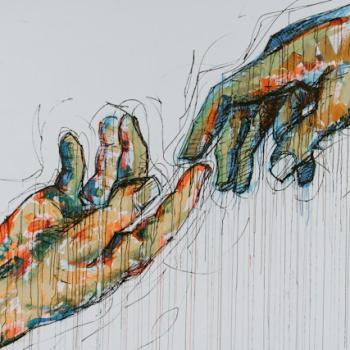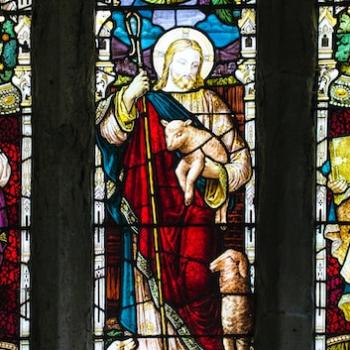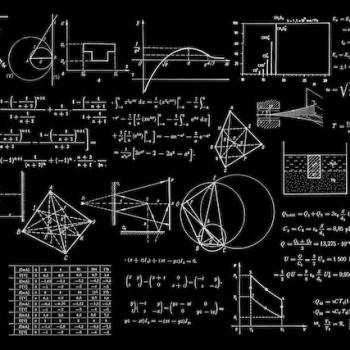
What would you say if I told you that I have four kidneys? That’s right, mine are smaller than yours, but I have twice as many. It’s a rare condition known as Renses Geminae. (In Latin “ren” means “kidney” and “geninae” means “twin.”) The best way to understand it is to think of my two sets of kidneys as two pairs of “identical twins.” They each began as one, regular-sized organ, but during gestation for reasons medical science has yet to fully comprehend, the combination of some of my parents’ unique genetic markers resulted in some wonky cell division. Ta-da! I have four.
Nowhere else in my body do I have double the usual equipment, but I’ve read that some people with my condition also have Vesicae Geminaea. (“Vesicae” is Latin for “bladder.”) Fortunately, I have no physical impairments because of this since each set of “twins” works together as a single unit. That’s one reason I don’t share this information very often. It doesn’t affect my daily life in any way, so why bring it up? My body’s process for turning waste into urine is the same as yours, and medical research has found no correlation between my condition and negative medical outcomes. I do go to the bathroom a lot, but evidently, that has nothing to do with the “twins.”
Another reason I keep a lid on it is that it’s just so . . . odd. I learned at a young age that strange anatomical anecdotes are not great conversation-starters. When my third-grade teacher said, “Turn to your partner and tell her something about yourself,” I really wish I had said that my favorite color is green.
A Hard Saying
There’s another reason I don’t bring it up much. It’s because it’s not true.
That’s right, I made it up. All of it. Well, most of it. The Latin is correct, and my favorite color is green.
Admit it. As you read this, you knew it didn’t seem like such a condition could be possible. But as you kept going, you started to suspend your disbelief a tiny bit. If identical twins come from an unconventional process of cell division, then maybe internal organs can do the same? Then you went back to, “C’mon, no way” before finally landing on “WTF?”
I image that’s how Jesus disciples felt during this Sunday’s gospel reading, a sequel to the Bread of Life discourse that came just before it and that we’ve heard in pieces in recent weeks. It begins with, “Many of Jesus’ disciples who were listening said, ‘This saying is hard; who can accept it’” (John 6: 60)?
Just what is it that’s so difficult to accept? It’s what we would have heard last week if the Feast of the Assumption hadn’t fallen on a Sunday this year. “Jesus said to them, ‘Amen, amen, I say to you, unless you eat the flesh of the Son of Man and drink his blood, you do not have life within you. Whoever eats my flesh and drinks my blood has eternal life, and I will raise him on the last day. For my flesh is true food, and my blood is true drink. Whoever eats my flesh and drinks my blood remains in me and I in him’” (53-56).
Yikes. His disciples responding, “This saying is hard,” seems like a very understated reaction to me. “WTF?” might get closer to how I’d react if someone I looked up to suggested cannibalism.
Sharing a Meal
Many believe that by speaking these words, Jesus was intentionally instituting the Eucharist. A major difference between Catholics and Protestants is the “real presence” of Jesus in the bread and wine at Holy Communion. I’m going to leave the doctrinal arguments debating whether Jesus’ words were literal or symbolic to others since I’m more interested in what all this means on a practical level for real people in a real – and really complicated – world.
The Jewish people celebrate important events and spiritual truths with food. When Abraham first enters Jerusalem, he breaks bread and drinks wine. He and Sarah announce the birth of Isaiah at a meal. God feeds the Israelites wandering in the desert with mana from heaven. And of course, Passover is the Seder meal that celebrates the Israelites safe movement from slavery into freedom. Jesus’ own Last Supper was a Passover meal. Numerous purity codes and regulations govern the use of food because of its central role in the Jewish faith. Sharing a meal is a holy, intimate endeavor.
This is the religious and cultural backdrop against which Jesus tells his disciples to eat his body and drink his blood. Reduced to its lowest common denominator, food and drink are all about nourishment. What we eat gives us the nutrition required for life. I read Jesus’ “hard saying” very simply: “Let me and my message nourish you.” When you are hungry for God, love your neighbor. When you are thirsty for courage, forgive those who hurt you. When you crave meaning and purpose, give to those in need and welcome God into the free spaces left behind. When you long for peace, work for justice even when it seems to be an impossible battle. Do these things and you will be filled. Do these things and you will “have life and have it to the full” (10:10).
Call it heresy, a cop-out, or watered down catechesis. I can live with that. This interpretation makes sense to me, and faith, for me, has to align with my lived experience. Jesus’ sequel to the earlier Bread of Life discourse in John’s gospel may sound even stranger to us than me having four kidneys. The disciples sure thought so, and many of Jesus’ followers unfriended him because of it. I still subscribe to his channel though because nourishment for my hungry soul is something the good news provides.











